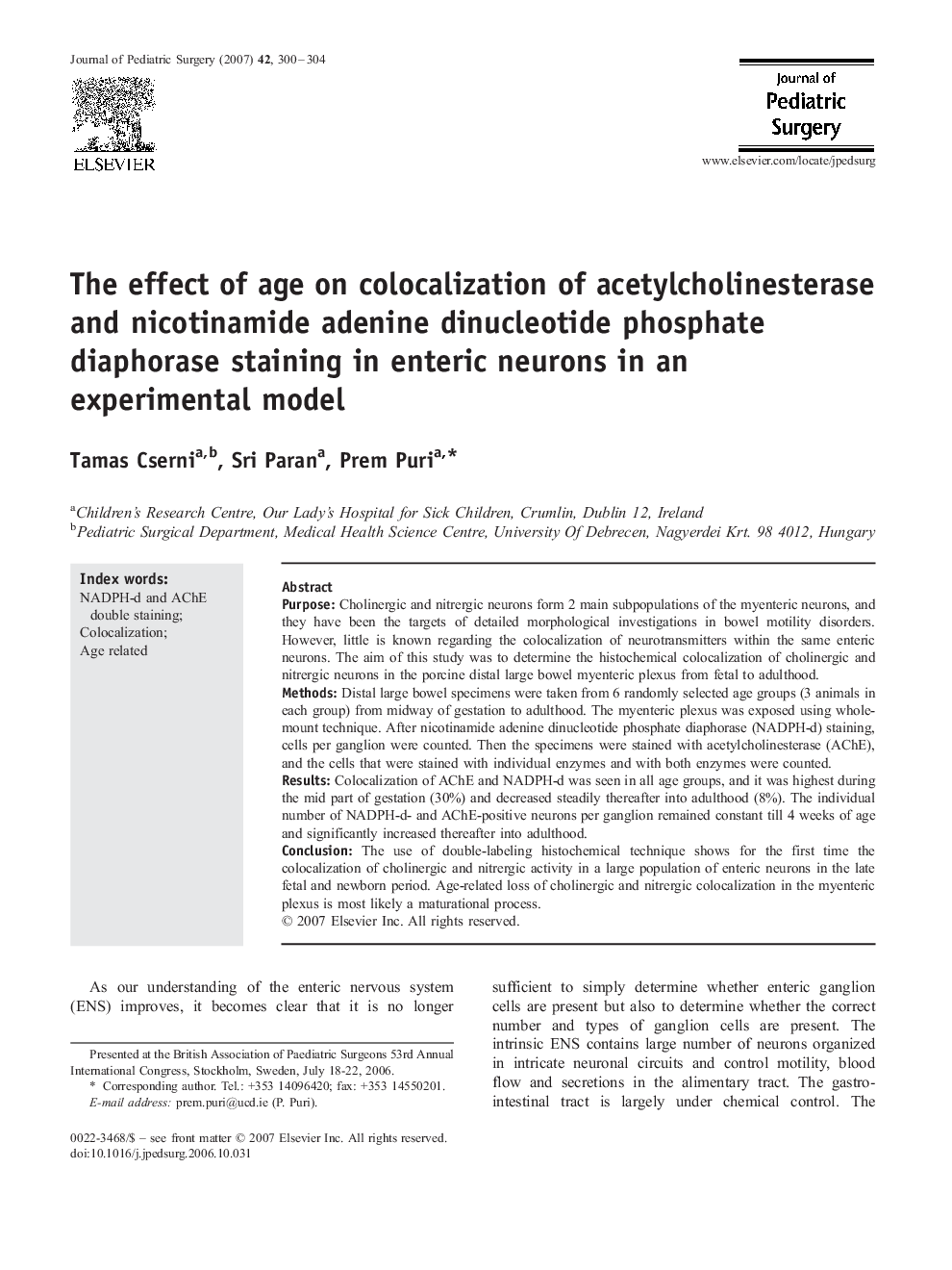| Article ID | Journal | Published Year | Pages | File Type |
|---|---|---|---|---|
| 4160546 | Journal of Pediatric Surgery | 2007 | 5 Pages |
PurposeCholinergic and nitrergic neurons form 2 main subpopulations of the myenteric neurons, and they have been the targets of detailed morphological investigations in bowel motility disorders. However, little is known regarding the colocalization of neurotransmitters within the same enteric neurons. The aim of this study was to determine the histochemical colocalization of cholinergic and nitrergic neurons in the porcine distal large bowel myenteric plexus from fetal to adulthood.MethodsDistal large bowel specimens were taken from 6 randomly selected age groups (3 animals in each group) from midway of gestation to adulthood. The myenteric plexus was exposed using whole-mount technique. After nicotinamide adenine dinucleotide phosphate diaphorase (NADPH-d) staining, cells per ganglion were counted. Then the specimens were stained with acetylcholinesterase (AChE), and the cells that were stained with individual enzymes and with both enzymes were counted.ResultsColocalization of AChE and NADPH-d was seen in all age groups, and it was highest during the mid part of gestation (30%) and decreased steadily thereafter into adulthood (8%). The individual number of NADPH-d- and AChE-positive neurons per ganglion remained constant till 4 weeks of age and significantly increased thereafter into adulthood.ConclusionThe use of double-labeling histochemical technique shows for the first time the colocalization of cholinergic and nitrergic activity in a large population of enteric neurons in the late fetal and newborn period. Age-related loss of cholinergic and nitrergic colocalization in the myenteric plexus is most likely a maturational process.
